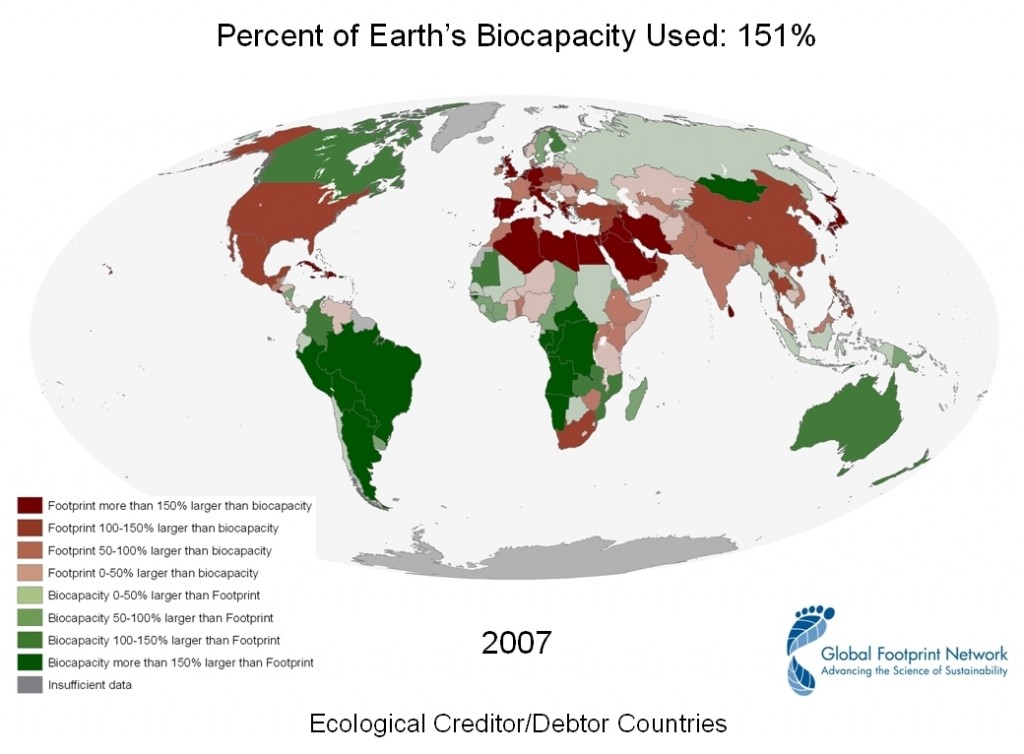Economic development is generally measured by a country’s GDP. However, this hardly tells the whole story. While some countries might be very prosperous now, their future looks a lot different when the sustainability of their development path is taken into account. In the light of this week’s editorial plan topic Development: Describing and Prescribing Progress, this blog will introduce the ‘ecological footprint’ as a means to quantify the consequences of specific development paths.

The Ecological Footprint is an accounting metric which assesses humanity’s pressure on natural resources. It establishes how much land and water area a human population requires, to produce the resource it consumes and how much of the regenerative capacity of our planet we use to absorb emissions. Together with the measure of biocapacity, which tracks how much natural productive capacity is available to meet our demands, an ecological balance sheet for the world can be established. If the global ecological footprint is larger than global biocapacity, it means that humanity is using more than can be regenerated, and processed by the biosphere.
